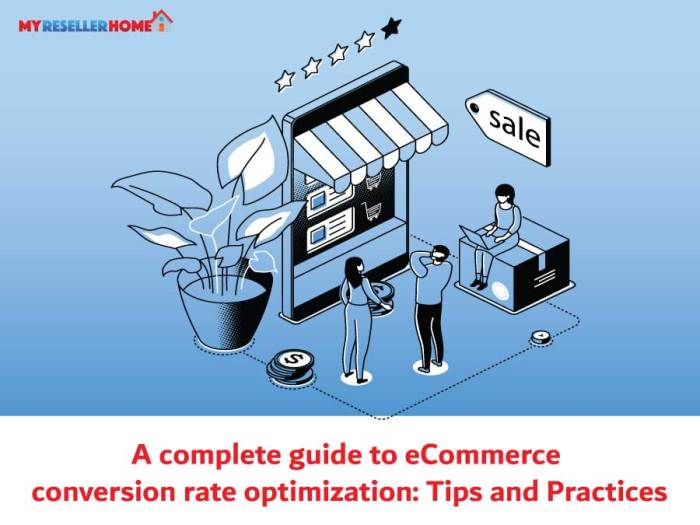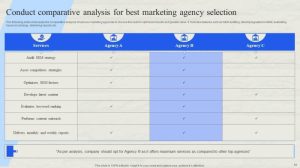
Welcome to the world of Conversion rate optimization for e-commerce, where we unravel the secrets to skyrocketing sales and conversions. Get ready for an exciting journey filled with tips and strategies to optimize your online business!
Are you ready to take your e-commerce game to the next level? Let’s dive in!
Understanding Conversion Rate Optimization for E-commerce

Conversion rate optimization (CRO) in the context of e-commerce refers to the process of improving the percentage of website visitors who take a desired action, such as making a purchase, signing up for a newsletter, or filling out a contact form. It involves analyzing user behavior, testing different elements on the website, and implementing changes to increase the likelihood of conversions.
Importance of CRO for Online Businesses
- CRO is crucial for online businesses to succeed because it directly impacts revenue generation. By increasing the conversion rate, businesses can maximize the return on investment from their marketing efforts.
- It helps in enhancing the user experience on the website, leading to increased customer satisfaction and loyalty. By optimizing the conversion process, businesses can create a seamless and enjoyable shopping experience for their customers.
- CRO allows businesses to make data-driven decisions by analyzing metrics and performance indicators. This helps in understanding customer behavior and preferences, enabling businesses to tailor their strategies accordingly.
Key Metrics for Measuring CRO Effectiveness
- Conversion Rate: This metric measures the percentage of website visitors who complete a desired goal, such as making a purchase. A higher conversion rate indicates that the website is effectively converting visitors into customers.
- Click-Through Rate (CTR): CTR measures the percentage of visitors who click on a specific element, such as a call-to-action button or a promotional banner. A higher CTR indicates that the element is engaging and compelling to users.
- Revenue Per Visitor (RPV): RPV calculates the average amount of revenue generated from each visitor to the website. By increasing RPV, businesses can maximize their revenue potential and profitability.
Importance of User Experience in CRO

User experience plays a crucial role in determining the success of conversion rate optimization (CRO) for e-commerce websites. A seamless and user-friendly experience can significantly impact the conversion rates, leading to higher sales and revenue.
Impact of User Experience on Conversion Rates
When users have a positive experience on an e-commerce website, they are more likely to stay longer, engage with the content, and ultimately make a purchase. On the other hand, a poor user experience can result in high bounce rates, abandoned shopping carts, and lower conversion rates.
Best Practices for Improving User Experience
- Optimize website navigation for easy access to products and information.
- Ensure fast loading times to prevent users from abandoning the site.
- Use clear and compelling calls-to-action (CTAs) to guide users towards desired actions.
- Implement a user-friendly checkout process with minimal steps and distractions.
- Provide high-quality images and detailed product descriptions to help users make informed decisions.
Role of Mobile Responsiveness in CRO
With the increasing use of mobile devices for online shopping, mobile responsiveness is crucial for CRO in e-commerce. A website that is optimized for mobile devices ensures that users have a seamless experience regardless of the device they are using. This can lead to higher conversion rates as users are more likely to make purchases on a mobile-friendly website.
Strategies for Effective CRO in E-commerce
When it comes to maximizing conversion rates in e-commerce, implementing effective strategies is crucial. Let’s explore some key tactics that can help optimize your conversion rate.
A/B Testing and its Significance in CRO Strategies
A powerful tool in the world of CRO, A/B testing involves comparing two versions of a webpage or element to determine which one performs better in terms of conversion. By testing different variations and analyzing the results, e-commerce businesses can make data-driven decisions to enhance user experience and ultimately boost conversions.
- Utilize A/B testing to experiment with different elements on your website, such as call-to-action buttons, product descriptions, or pricing structures.
- Track key metrics like click-through rates, bounce rates, and conversion rates to measure the impact of each variation.
- Continuously iterate and refine your A/B tests based on insights gained from previous experiments to optimize your conversion funnel.
Remember, A/B testing is a continuous process that requires ongoing optimization to achieve the best results.
Importance of Personalization in Improving Conversion Rates
Personalization plays a significant role in engaging customers and driving conversions in e-commerce. By tailoring the shopping experience to individual preferences and behaviors, businesses can create a more personalized and relevant journey for each customer, leading to higher conversion rates.
- Implement personalized product recommendations based on past purchases or browsing history to enhance the shopping experience.
- Use dynamic content to deliver targeted messages and offers that resonate with specific customer segments.
- Leverage customer data to personalize email marketing campaigns and retargeting efforts for increased conversion rates.
Personalization can make a significant impact on conversion rates by creating a more tailored and engaging experience for each customer.
Examples of Successful CRO Strategies Implemented by E-commerce Companies
Several e-commerce companies have successfully leveraged CRO strategies to drive conversions and boost revenue. Let’s take a look at some notable examples of effective CRO implementations in the industry:
| Company | CRO Strategy | Results |
|---|---|---|
| Amazon | Optimized checkout process with one-click ordering | Increased conversion rates by 20% |
| Zappos | Implemented live chat support for real-time customer assistance | Reduced cart abandonment rates by 15% |
| Sephora | Personalized product recommendations based on beauty profile | Boosted average order value by 10% |
These examples demonstrate the power of effective CRO strategies in driving conversions and improving the overall shopping experience for customers.
Marketing E-commerce
In the world of e-commerce, marketing plays a crucial role in driving traffic and increasing sales on online platforms. Let’s dive into the different marketing channels used in e-commerce and how they impact the success of online businesses.
Different Marketing Channels in E-commerce
- Social Media Marketing: Social media platforms like Facebook, Instagram, Twitter, and Pinterest are commonly used by e-commerce businesses to reach a larger audience, engage with customers, and drive traffic to their websites.
- Email Marketing: Sending targeted emails to subscribers with promotions, product updates, and personalized recommendations can help e-commerce businesses nurture leads and drive conversions.
- Search Engine Marketing (SEM): Using paid advertising on search engines like Google can help e-commerce businesses increase visibility, attract new customers, and drive targeted traffic to their websites.
- Affiliate Marketing: Partnering with affiliates to promote products or services can help e-commerce businesses reach new audiences and increase brand awareness.
Role of Social Media Marketing in E-commerce
Social media marketing plays a vital role in promoting e-commerce platforms by creating brand awareness, engaging with customers, driving traffic, and increasing sales. Platforms like Instagram and Facebook offer powerful tools for e-commerce businesses to showcase their products, run targeted ads, and connect with their target audience on a more personal level.
Impact of Influencer Marketing on E-commerce Sales
Influencer marketing has become a popular strategy for e-commerce businesses to reach new audiences and increase sales. Collaborating with influencers who have a strong following and influence in a specific niche can help e-commerce businesses gain credibility, increase brand awareness, and drive conversions. Influencers can create authentic content that resonates with their followers, leading to higher engagement and ultimately, more sales for e-commerce platforms.
Outcome Summary
As we wrap up our discussion on Conversion rate optimization for e-commerce, remember that implementing these strategies can lead to significant growth in your online business. Keep experimenting, stay innovative, and watch your sales soar to new heights!
Essential FAQs
How can CRO benefit my e-commerce business?
Conversion rate optimization can significantly boost your sales by improving the user experience and increasing the likelihood of visitors making a purchase.
What are some common mistakes to avoid in CRO?
Avoiding testing only one version, neglecting mobile responsiveness, and not personalizing the user experience are common mistakes that can hinder CRO success.
How can social media impact CRO?
Social media can drive traffic to your e-commerce site, increase brand visibility, and create opportunities for engagement, all of which can positively impact CRO.





